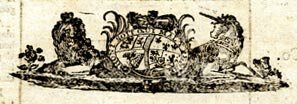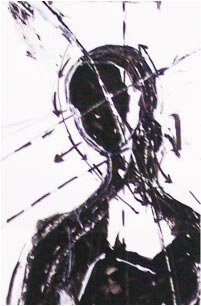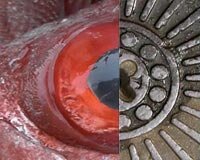imaginemag - arts & culture emagazine | jan / feb 2010 : edition 02
I SAY… Thank you to those readers who took the time and effort to contact us and express interest and show support for this emagazine. It is much appreciated and we look forward to hearing from many more of you in the year ahead. We value your comments so please send us your contributions via email. Letters to the editor, proposals for articles, queries are welcome. See our contribution page for details.
Ready or not 2010 is here and it is soccer big time in South Africa. I have now reached common ground with my gardener from Malawi. He is very knowledgeable about all the teams and I am totally ignorant. So he talks and I listen. However, I think I went up slightly in his estimate when he came to work one morning and I actually knew that Malawi had won some game or other 3 nil. In this our second edition of ImagineMag! read about Vuvuzelas and their part in exhorting the players to play the game. Are they part of our cultural heritage or another, wonderful money making promotional tool? I have heard discussion concerning the creation of a Vuvuzela orchestra! What a thought! And Vuvuzelas made from Kelp? Well shells and stones, animal skins stretched on drums are used to provide rhythm in certain musical cultures. Perhaps these aspects should be explored in a future edition. Thoughts people?
The first theatre in South Africa – how it was started, who was involved and the difficulties they had to overcome. Read this fascinating piece of research of our theatrical history and you will realize that whilst technology is growing all the time many of the situations we find ourselves in have not changed at all and the problems that beset management of most if not all theatres are the same today as they were so many years ago. Finding performing space, venues, paying the performers, developing an audience and making sure there were not too many free loaders. But don’t let me spoil it for you – read it for yourself. And then read about a new theatrical venue starting in Muizenberg and the interesting work that is being done by Kurt Egelhof and Natalia Da Rocha
That brings me to thoughts that have been occupying my mind for some time now – the reasons why humans need to create work to put on a stage for an audience to watch. What are the compulsions that drive one or is everyone involved in the theatrical scene merely masochistic? I mean think of the problems (or as a friend says, challenges) one faces in mounting even the most simple of productions. Firstly there is raising the money to mount the production that is after you have calculated how much is needed and then doubling it just so that you have a slight chance of breaking even at the box office. Finding suitable venues, suitable performers, creating costumes, sets and then the whole marketing scene which hopefully results in sold seats. Notice I do not say full houses because that does not necessarily mean the tickets have been sold! Freebies were and still are the bane of managers and performers lives. Then of course you have to take into account sickness, injury, natural disasters, transport problems, economic downturns and the stage is set to cause stumbles all along the rehearsal pathway. And then after all these hurdles have been overcome one still has to contend with the audience. That animal who sits in wait behind the stage lights just waiting to pounce on the unwary performer who slips or gives less than a perfect performance. And we know that the entire world’s a critic and the more ignorant, the more critical!
Performing is communicating on many levels and, as with so many forms of communication, likely to be misunderstood. As one member of the audience one day remarked to me after a performance, ‘I loved that work and thought it was absolutely beautiful but please explain it to me’. My initial reaction was irritation – how could she be so stupid not to understand my
masterpiece? But then I thought, perhaps it is enough for her simply to have enjoyed the work even if she probably would never get to grips with the intricacies of my thought process and motivation – and does she have to?
Whenever I manage to listen to the radio program, the African Connection, I am always so overwhelmed with the incredible variety from the African Diaspora. How different cultures affect every aspect of our life is very evident when you listen to music. I am a great fan of this presenter as he presents his program his love and passion for the music seeps over the airwaves. Another wonderful aspect of this program is the background information provided of the various musicians, the countries they come from and interesting anecdotes.
And to music of a different kind, in this edition read about Gordon Mackay, his musical journey from playing with the Port Elizabeth orchestra to developing a band, becoming a solo performer, writing wonderful music for a wide variety of activities including three full productions for Dance Crew. Snippets are included so check them out as well. His latest compilation is a CD of him singing and playing a multitude of instruments. To catch him live you can visit Grand West in the early part of the year. For more details read his article.
The beautiful and thought provoking works of art on dance by Natalie Davies should not be missed. Many questions are raised in her portrayal of dancers and their various body parts. The female body ideal becomes a subject for visual dissection and discussion and one that has been around for many years and probably will always be around. Here again our perception of what is and is not beautiful is based on our cultural backgrounds. With dancers, teachers and choreographers there should be a knowledgeable and realistic acceptance as to what the physical structure of each body is capable of doing. As with any material with which one works one must take into account the specifications that are inherent in the product. Creating false expectations in dancers as to what their bodies should and are able to achieve is a recipe for physical and mental disaster.
After an exhaustive nation-wide selection process 100 artists and over 130 art pieces have been chosen for South Africa’s largest contemporary art exhibition, the Spier Contemporary 2010. The Africa Centre’s art biennale, the Spier Contemporary 2010 will launch on the 14th March 2010 at the Cape Town City Hall. This is something not to be missed. Read the article to find out more. We will follow up in the next edition and perhaps one or two of the many that I know will be there might like to give us input and their observations and comments.
Until the next edition I have had my say now let us hear what you have to say.

Amy Gould is a Fellow of the Imperial Society of Teachers of Dancing. She is the principal and owner of her full time ballet school, director and choreographer of her dance company Dance Crew, owner/manager of Tokai On-Main a 100-seater intimate theatre and editor in chief of ImagineMag!
01 / the first south african theatre:
What form did art and culture take at the small Cape settlement in the early years of its development? How did people define, amuse and or entertain themselves?

Life was certainly not easy for the men and women who arrived at the Cape in the middle seventeenth century. Initially there was nothing to compare with their mother countries, even if, in these mother countries, they had had very little in the way of material possessions or education. But slowly they became acquainted with fellow settlers, became aware of the indigenous peoples, tried to earn a living, married had children, began to think of schooling for these offspring, medical care etc. Places of religion helped to create a sense of belonging, acted as a meeting place where invitations to homes, family members could be given; information passed on, as for example, what goods the latest shipping arrival had brought to the thinly populated area. At the same time a fashioning of a local class order was also taking place. Read the full story...
02 / new theatre in muizenberg / theatre in the muze diary:
Cape Town’s latest addition to its cultural life was spawned right here in sunny Muizenberg on the 23rd December 2009.
An old venue, adjacent to Adam’s Trading Post and situated at 19 Atlantic Road, Muizenberg, (formerly known as ‘Curves’ to the locals), was converted into a theatre performance space, an audience was invited to attend, and the stage was set for the birth of a new theatre venue right here in Muizenberg. Read the full story...

03 / the fettered swan unbound:
The latest series of paintings by UJ Fine Arts student Natalie Davey, problematises the concept of “The Feminine Ideal Body” through the metaphor of Classical Ballet and the iconic conventional representation of The Ballerina.
This year’s Final Year Student’s exhibition at the school of Fine Arts, Design and Architecture at the University of Johannesburg in Auckland Park(October 2009) showcased the works of 17 third and fourth year fine arts students, amongst dozens of others displaying their final year works for Graphic Design, Multimedia, Architecture, Fashion and Jewellery Design, in a thoroughly modern four-floored temple to the creative spirit crafted from steel, glass, concrete and various computerized gadgetry. One of these 17 Fine Arts students is Natalie Davey, whose latest series of large paintings as well as sketches in acrylic and PVA on canvas, masonite and paper tackle the problematic and often double-edged concept of “The Feminine Ideal”, as represented by the conventions and iconographic image of ‘The Ballerina’. Read the full story...
04 / soccer international:
During June and July 2010 the FIFA World Cup tournament will be played out in different stadiums in various part of South Africa. A noisy aspect of these games – according to dissident voices – will be the blowing of a brightly coloured length of plastic, approximately a metre in length, with a rounded end. A vuvuzela. Read the full story...

05 / spier contemporary 2010:
After an exhaustive nation-wide selection process 100 artists and over 130 art pieces have been chosen for South Africa’s largest contemporary art exhibition, the Spier Contemporary 2010. The Africa Centre’s art biennale, the Spier Contemporary 2010 will launch on the 14th March 2010 at the Cape Town City Hall. Read the full story...
06 / gordon mackay
Multi-talented performer and composer Gordon Mackay has provided us with a brief background to what he has achieved and what he is currently doing. You also have the opportunity of listening to some of his original music. . Read the full story...
07 / the culture of toys:
The dictionary definition of toys is: a plaything, a trifle, a thing only for amusement or of no importance. All of these definitions are correct but think how important a particular plaything was to a lonely child, a child living somewhere near nowhere; think how toys can define a child’s future thinking – for example little girls given dolls who then copied their mothers in caring and nursing thus helping to set, perhaps permanently not necessarily for the good, their future role in life. Or a little boy surrounded by things mechanical with a similar future result. These examples are certainly not meant to state or infer that toys could be perceived as undesirable objects but simply that they could be used to steer children along a certain future work path. Read the full story...
08 / the value of art:

Some of the most pressing issues which have haunted the thoughts and theses of artists, critics and philosophers alike can, arguably, be summed up into a single question: “What is the Value and the Purpose of art?” The arguments, positions and possible answers this question have inspired are as numerous and varied as there are artworks in existence. What is the value and purpose of art- the making of as well as the engaging with art as an audience? Why do we as human beings respond so deeply and passionately at our most basic psychological and emotional levels to the idea of art as well as certain works of art? Is an art work’s purpose, and thus the value we obtain from it, to express the artist’s most personally significant view of the world? Or is it found merely in a work’s pure aesthetic enjoyment? Is art-its purpose, value, and therefore its meaning- merely a socially constructed abstraction which is arbitrarily inferred by the viewer, containing no actual substance or a meaningful standard of interpretation, as opposed to the concretized intentional expression of the artist, as is frequently argued by the Postmodernist school of thought? Read the full story...
edition. 02 contributors
Larissa Fainberg is a freelance arts and culture writer living in Johannesburg, with a particular interest in the dynamic, up and coming visual arts scene which South Africa has to offer. She has a BA Humanities in History of Art and Philosophy from The University of the Witwatersrand.
Dawn Gould (D Litt et Phil), owns and runs FACTS FOUND an historical research bureau situated in Cape Town, South Africa.
For further details see factsfound.isat.co.za

